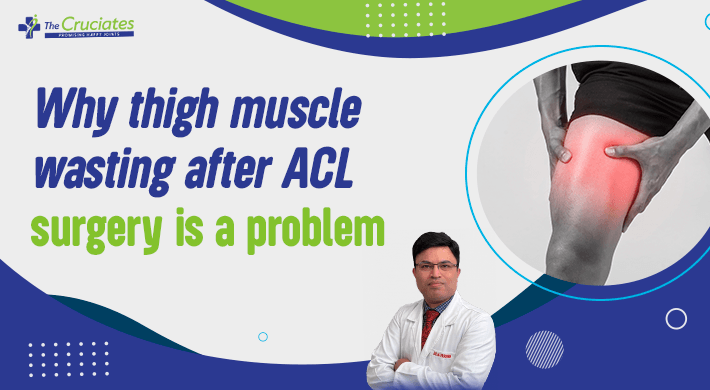Like many, you’ve likely had to deal with the pain of a torn ACL at some point in your life. While surgery can be an important step in returning to full knee functionality, one of the biggest challenges that many face when recovering from ACL surgery is regaining thigh muscle mass. In fact, according to some estimates, up to 50% of people who undergo ACL reconstruction surgery experience thigh muscle wasting during their recovery process. Fortunately, there are ways to prevent this from happening to you and keep your thigh muscles healthy and strong over the long term.
How do we gain muscle mass?
When a person exercises, their muscles become stronger in response to the progressive overload. A person’s muscles also need to be progressively loaded on a consistent basis in order to maintain their mass. When someone has an injury, they may experience a decreased muscle mass due to disuse atrophy. Physiotherapy will help prevent this from happening while the patient recovers. Following the surgery, people lose mass in response to inactivity
Disuse muscle atrophy
It’s not enough to just get your ACL replaced. If the procedure involves reconstruction of the anterior cruciate ligament, which connects the femur (thigh bone) to the tibia (shinbone), then muscle atrophy will occur as a result of inactivity.
Initial few weeks after ACL surgery, you will mostly be doing rest with limited activities. This will result in loss of muscle mass due to the absence of adequate stimulation of muscles. This is called Disuse muscle atrophy.
Muscle mass is necessary for strength, so exercise increases muscle mass. However, atrophied muscles will take more time to regain mass than healthy ones; this is because there are fewer cells capable of dividing. Initially, weeks following surgery are important because they allow for new connections between nerve cells and muscle fibers-which are key in rebuilding the strength-to form.
The importance of starting physiotherapy immediately
Athletes who undergo surgery for an ACL tear often have trouble regaining the strength of their quadriceps. Thigh muscles are important because they provide knee stability. The longer the time between injury and surgery, the less likely it is that your quadriceps will return to full strength. Starting physiotherapy immediately after surgery gives your quadriceps the best chance of strengthening. A well-customized physiotherapy protocol with quadriceps strengthening gives the best results.
If a patient doesn’t follow all physiotherapy protocols, they may have problems with disuse muscle atrophy, which means that muscles may not regain the same amount of mass. This can lead to a long recovery time. Remember this is always a teamwork that involves surgeons, physiotherapists, and patients.
It can take over a year to regain muscle mass
Prevention is always better than cure. It is always been a tough job to regain the muscle mass you already lost. it may take tears to recover completely.
This is because you begin with a disadvantage when trying to gain muscle back after ACL surgery compared to if you hadn’t had surgery at all. In addition to this, you will need to gain back the muscle you’ve already lost due to disuse prior surgery.
The ideal time for ACL surgery
Getting ACL surgery at the ideal time is another way to prevent thigh muscle wasting. This is because following ACL injury patient will not be able work with full strength. This limitation in the affected limb results in the progressive weakening of thigh muscles. This makes post-operative rehabilitation poor and patients will definitely struggle to get back to normal life. So, the ideal time for ACL surgery is 4-6 weeks after AXL injury. To much delay results in thigh muscle wasting and makes post-op rehabilitation hard.
“The Cruciates” is a team of highly experienced and skilled surgeons who are in the sports medicine field for a long time and have dealt with complicated sports injuries. Dr. Nagendra Prasad one of the best arthroscopy surgeons in India leads the team. The Cruciates is committed to delivering high-quality services and would like to make sure that, you are satisfied with our work. The team Cruciates provides customized treatment and follow-up to each patient to make sure that everyone will achieve the desired level of recovery and rehabilitation to ensure an early return to sports.

